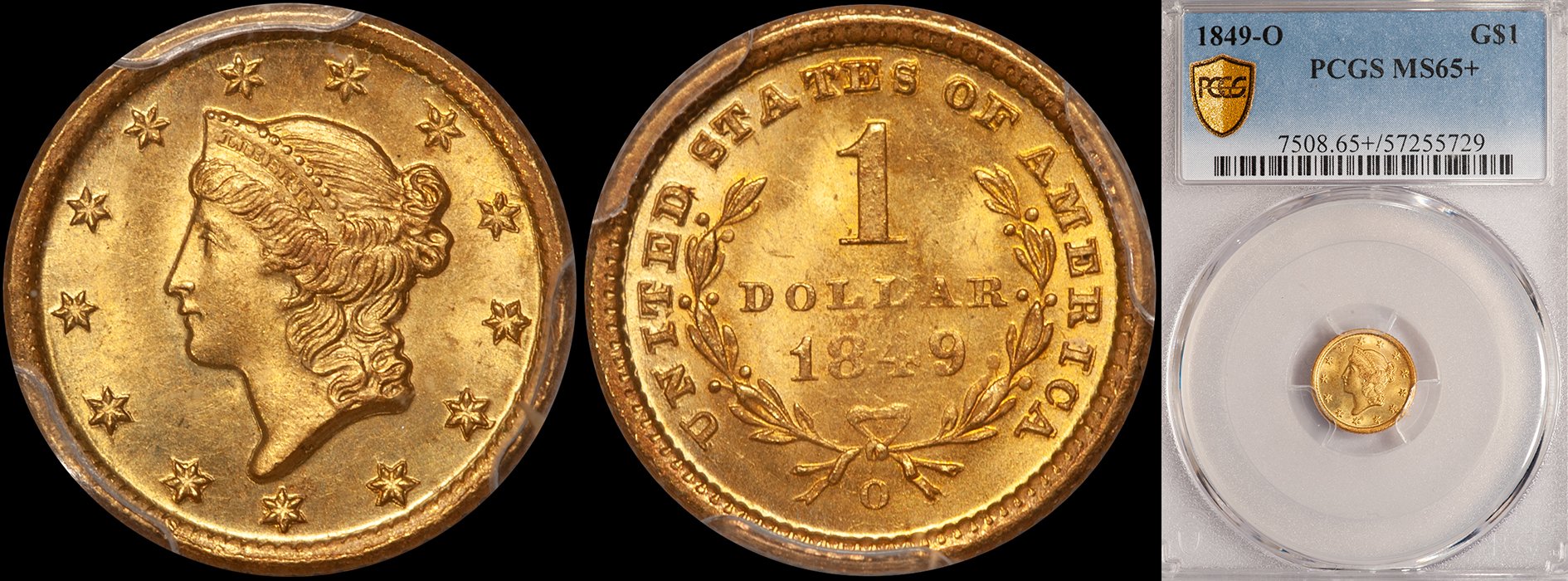Charlotte Half Eagle Rarity
/As I’ve been working on the updated third edition of my Charlotte book, I’ve had the chance to make some interesting observations regarding the rarity of Charlotte half eagles. The overall rarity of most Charlotte half eagles has changed. In nearly every instance, this has meant an increase in the total number known for a specific issue. As an example, I estimated in the second edition that 70-80 examples of the 1840-C half eagle existed. My revised estimate, in the third edition, is 80-100.
The increased populations are a result of a number of factors. After nearly twenty years of grading Charlotte coins, the PCGS and NGC populations represent significantly large percentages of the known total for every specific issue. So, these population figures carry more weight with me than they did ten years ago (and, yes, I have figured regrades/resubmissions prominently as a factor of total populations from both services).
I believe that my second edition estimates were also a bit on the low side when it comes to lower grade coins. While I knew of nearly every high grade 1840-C half eagle that exists (now or when the last edition was written) I tended to underestimate the low grade coins. My new estimates try to take into account these pieces.
There are changes in the population estimates for EF and AU half eagles because, let’s face it, the EF45 of ten years ago is, in most cases, an AU50 (or higher) today. I’ve tried to factor in gradeflation into my estimates and I tend to discount some of the slabbed AU50 or MS60/61 coins as, in my opinion, they do not meet my personal grading standards.
One thing my updated research has reinforced is that really choice Charlotte half eagles (MS63 and better) remain genuinely rare. While many of the coins listed in the Condition Census of my second book have changed owners and, in many cases, holders, they remain coins with pedigrees that I am able to trace back to the 1990’s or earlier. I’ve also noticed that the grading services have done a good job (most of the time) at holding the line on higher grading Charlotte half eagles. While a few MS63’s have become MS64’s or MS64’s have become MS65’s, many of the coins that were grading MS64 or MS65 back in the mid-to-late 1990’s have remained consistently graded.
The Bass sales, held from 1999 to 2001, had a huge impact on the third edition of the book. Many of the coins that I speculated about in the first two editions but were unaware of their location/grades were in the Bass collection. They now appear in the third edition; complete with accurate pedigrees and current grades.
What are a few other things that I have learned about Charlotte half eagles that will be reflected in the new third edition of the book?
* I’ve learned that some of the die variety information for issues such as the 1849-C, 1850-C, 1853-C and 1854-C was wrong and it has been corrected.
* I’ve learned the value of good pictures and the crappy old black and white images that appeared in the first two editions will be replaced by useful color plates.
* I’ve learned that people generally liked the format and design of my second edition of the New Orleans gold book that I published last year and so this format will be adapted to the upcoming Charlotte book.
* Finally, I’ve learned that Charlotte coinage for me is like the numismatic equivalent of “home cooking” and when I’m feeling cranky or burned-out, nothing is more numismatically soothing than a dose of Charlotte half eagles.










